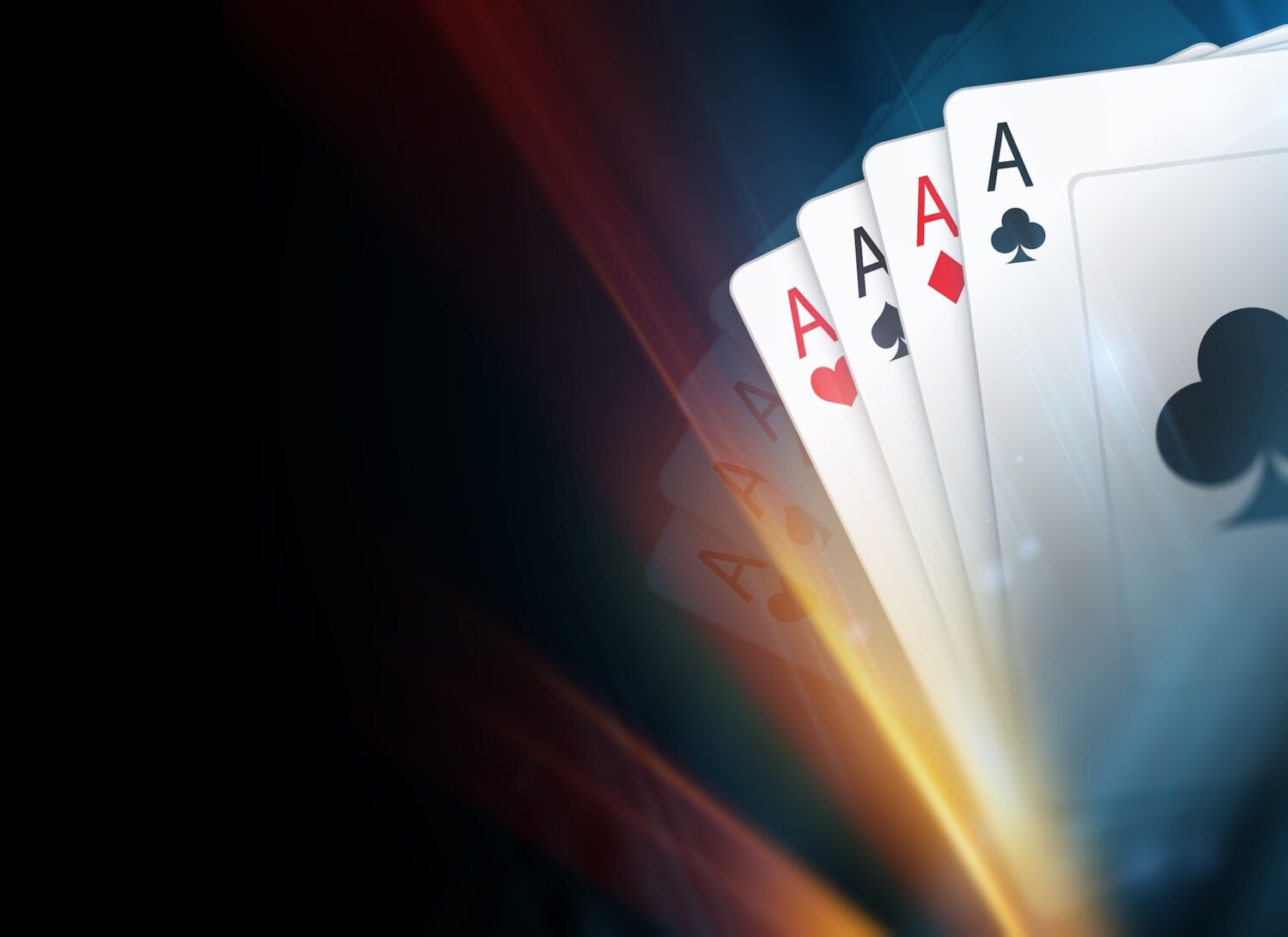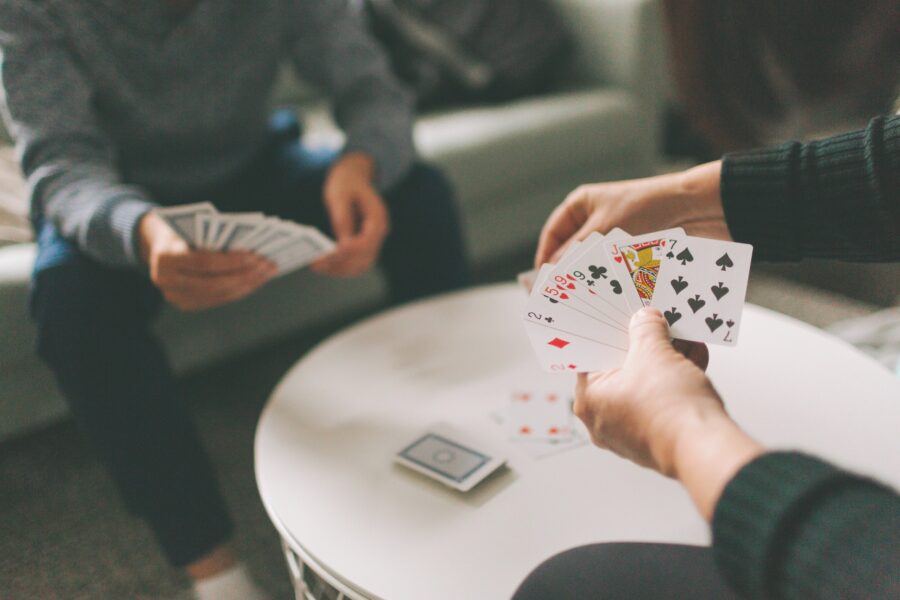Four-Card Golf Game
Players, Cards, and Dealing in Four-Card Golf
Players: As long as there are at least two players, there is no maximum number of players that can play the four-card version of golf.
Cards: You only need one standard deck of cards, but if you are playing with a larger group of people, then it is recommended to use two decks of cards.
Dealing: To begin each round, the dealer deals each player four cards, which are arranged face down in a square. The leftover cards are placed face-down in the middle of the table, and the top card is placed face up to begin the discard pile.
The Play in Four-Card Golf
After the four cards are dealt to each player and before the round beings, players can look at the two cards in their grid that are closest to them. Players should not show these cards to anyone else. These cards cannot be looked at again throughout the round, so it is important to remember them. The players must not look at the top two cards of the grid. Then, the playing begins! The player to the dealer’s left goes first and then the sequence of play continues clockwise.
When it’s your turn, there are three possible actions to take. They are as follows:
- Draw the top card of the face-down card deck in the centre.
After you draw a card, you can replace one of your four cards within your layout with that card. However, you can not look at any of the cards within your grid before deciding to switch any of them out with the card that you just drew from the deck.
When you are replacing a card in your grid, you place the card you just picked up face-down and place the replaced card face-up in the centre discard pile.
If you draw a card from the pile and decide that you do not want to use it to replace any of the cards in your grid, you simply place it in the discard pile, and the next player begins their turn.
- Take the card on the top of the discard pile.
You have the option to use the top card of the discard pile to replace any of the cards in your four-card grid. However, unlike when you draw from the deck, you must replace one of your cards when you take a card from the top of the discard pile. You cannot put the card back on the top of the discard pile and leave the play as it was.
- ‘Knock’ to notify the other players that you are ending the round.
Before going through the entire deck in the middle, a player can choose to ‘knock’ to end the round early. This is a great strategy if you feel you have a low enough score, and there is a higher chance that the other players have high points in their grid, since they have had less chances to replace their cards.
If you knock, that is the end of your turn, but each of the other players get one more turn. Then the round ends and scoring begins.
Remember that you cannot look at any of the cards in your grid during the round. If you do, that card must be replaced with the card you drew from the stock pile or the discard pile.
Scoring in Four-Card Golf
After a player knocks, or after you have gone through the entire stock pile in the centre, the round ends.
To score, each player flips the four cards in the grid over. The values of each card are:
- Ace = 1 point
- Each number card is worth its face value (Two = 2 points, Three = 3 points, etc.)
- Jack and Queen = 10 points
- King = 0 points
Four Kings is the best possible grid, as it is a total of zero points. The player with the lowest score at the end of all the 9 or 18 rounds is declared the winner.



